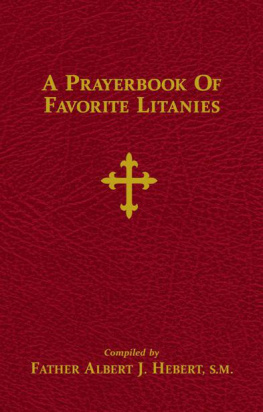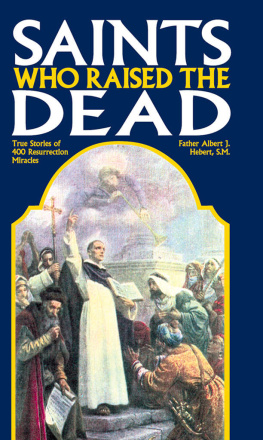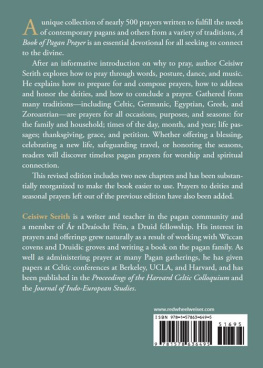All ye works of the Lord, bless the Lord: praise and exalt Him above all for ever. O ye angels of the Lord, bless the Lord: praise and exalt Him above all for ever. O ye heavens, bless the Lord: praise and exalt Him above all for ever . O ye sons of men, bless the Lord: praise and exalt Him above all for ever.
O let Israel bless the Lord: let them praise and exalt Him above all for ever. O ye priests of the Lord, bless the Lord: praise and exalt Him above all for ever. O ye servants of the Lord, bless the Lord: praise and exalt Him above all for ever. O ye spirits and souls of the just, bless the Lord: praise and exalt Him above all for ever. O ye holy and humble of heart, bless the Lord: praise and exalt Him above all for ever . O give thanks to the Lord, because He is good: because His mercy endureth for ever and ever.
O all ye religious, bless the Lord the God of gods: praise Him and give Him thanks, because His mercy endureth for ever and ever. Song of the Three Young Men in the Fiery Furnace ( Daniel 3:57-90)
PUBLISHERS PREFACE
This book was conceived to be a prayerbook, rather than a book for scholarly purposes. Therefore, to serve as such, it must be used again and again so that one gains familiarity with the litanies and prayers it contains. Litanies, as prayers, possess two peculiar aspects. First, a person must be familiar with the litany being prayed in order for it to be profoundly and powerfully recited. It mustas with any well-said vocal prayerbe completely known to its user and contain no surprises, for surprises distract a person from attention to his prayer.
Therefore, one must recite a litany again and again for it to acquire this power within his prayer life. And second, a litany, by the very variety of its expression, remains ever new. Whereas at first thought, one might judge the recitation of a litany to become quickly boring and flat, just the opposite is true. A litany ever reveals to the reciter new insights and new channels of devotion. Much like a many-faceted gem, a litany reflects its lightfirst from one angle, then from anotherwith an almost supernatural charm and freshness. From these observations it is obvious that with time one should adopt favorite litanies, which he will then incorporate into his daily prayer.
Litanies said as prayer bring a wonderful variety to ones daily prayer routine and beautifully complement meditation, the Rosary and other vocal prayers. Finally, the litanies in this book have been arranged for recitation by two or more persons, with the responses being in italics. It is strongly urged that this book be employed for group prayer, in addition to personal use. There is a litany here for just about every conceivable need or purpose. May this beautiful book of litanies become a priceless source of inspiration, instruction and grace to those who possess it, and may it be spread far and wide throughout the Catholic world, to the greater honor and glory of Almighty God and of His Blessed Mother Mary, His angels and His saints. Thomas A.
Nelson Original Publisher November 28, 1984
INTRODUCTION
Litanies have long been in use in the Church. The word litany comes from the Latin litania , letania . It stood for a form of responsory prayer which involved a number of invocations or petitions grouped around one main subject or sacred theme. Litanies have long been employed both in public liturgical devotions of the Church and in private devotions. Only a limited number of litanies are authorized by the Church for use in public devotions and at public services. Other litanies may be used for private recitation by an individual or a group.
An example of a litany officially approved for public use is the Litany of the Saints , the oldest litany in the Church and the model for all others. Litanies vary in form and makeup: Some are longer, some shorter, and some vary in formatin invocations, acclamations, petitions and types of responses. Some are directed to Persons of the Blessed Trinity, some to the Blessed Virgin Mary, others to the angels or saints; still others are arranged around a theme, as is the Litany for a Happy Death or the Litany of Humility . Litanies are rich in theological and Scriptural content and should have a wide use in prayer and meditation. The key element in the litany form of prayer is its series of varied invocations, followed by the same repetitive response. A priest or other leader reads the invocations, and the people answer with the responses (printed in italics in this book).
Usually, at the beginning of a litany, the Blessed Trinity is invoked, and at the end, the Lamb of God. The Church must approve any additions to the officially approved litanies. Thus, in the Litany of the Blessed Virgin Mary (Litany of Loreto) , the popes in recent years have added the invocations, Queen assumed into Heaven, Queen of Peace, and Mother of the Church. Where God is addressed, the response is Have mercy on us. The answer to invocations or petitions to Mary, the saints and angels is Pray for us. In some litanies there are other apt responses, such as, We beseech Thee, hear us, and Deliver us, O Lord.
Often there will be a versicle and a response, indicated by V. and R. The litanies all close with a suitable short prayer introduced by the words, Let us pray. In the Old Testament period we find, in certain of the Psalms, prayer or song forms somewhat similar to our modern litanies. In Psalm 135 (136) we find repeated use of the identical phrase, for His mercy endures forever, which is now used at the end of the sacramental rite of Penance or Reconciliation. In our modern, revised Liturgy of the Word at Mass, we have the Prayer of the Faithful with one or another repetitive response.










 Joseph V. Sullivan, S.T.D.
Joseph V. Sullivan, S.T.D.